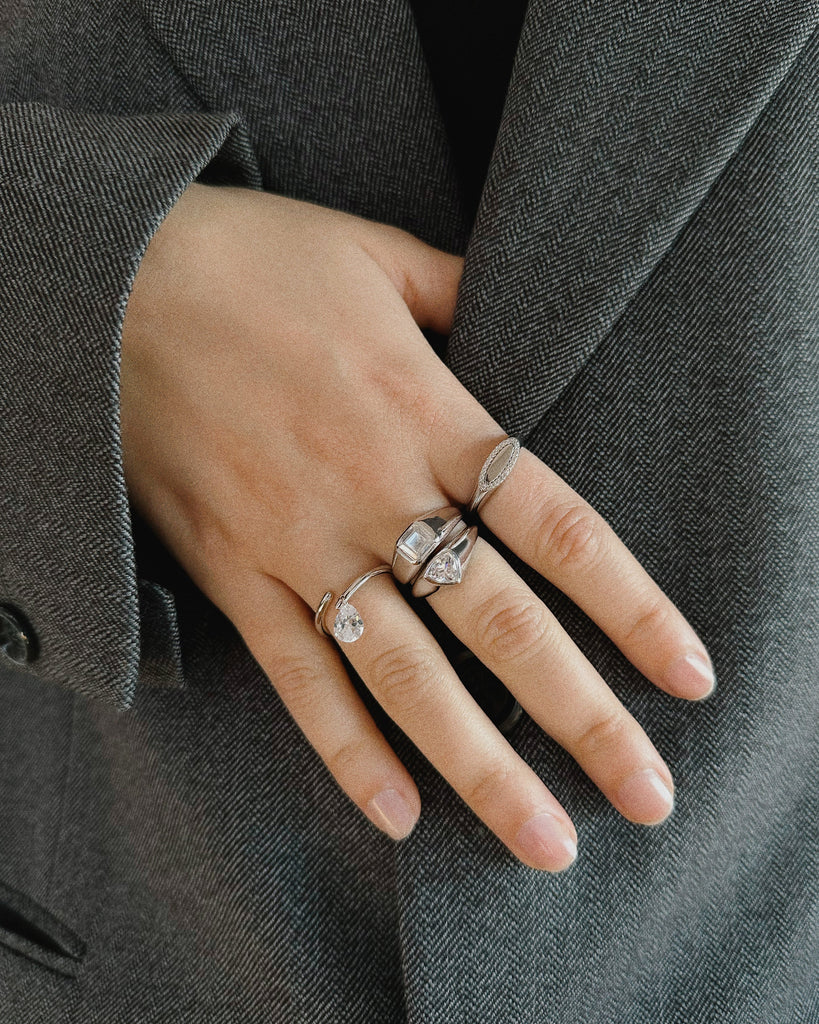Diamonds are the most famous gem yet, do you know much about their origins and how they make it into a piece of jewelry? And had you heard about lab-grown diamonds before?
Diamonds form under intense pressure within the Earth’s mantle, with the most rare diamonds forming even deeper, in the bowels of the Earth. The formation process of these gemstones is almost a marvel: diamonds need between 1 to 3 billion years to be formed. A result of time and exceptional natural conditions, these precious gemstones are classified as a finite wonder, as well as a universal symbol of wealth and glamour. Must be a reason why they are called “a girl's best friend”.
Iconic and beautiful. However, there’s a big downside to these gemstones: they come with high environmental and humanitarian costs linked to mining. But as consumers become more conscious, the jewelry industry has had to keep up and offer more sustainable alternatives, and this is where lab-grown diamonds come into play.
Lab-grown diamonds are chemically, physically and optically identical to mined diamonds. As well as maintaining their natural radiance and extreme beauty, lab-grown diamonds represent a more sustainable approach where beauty and quality are not compromised.
How Lab-grown diamonds are made
We can’t stress this enough: even if they are created in a laboratory, lab-grown diamonds are identical to mined diamonds. There is no visible difference between them: even a professional gemologist could have difficulties differentiating an Earth-created diamond from a man-made one. Lab-grown diamonds also come to life using extreme pressure and heat, but inside a machine instead of the Earth’s mantle, which makes the process faster: it takes around 3-4 weeks to grow them (instead of billions of years). Please, let’s give technology and science a big round of applause!
There are two main ways to grow quality diamonds at present. One method is called the High-Pressure High Temperature (HPHT) system: a seed of another diamond is placed in a chamber with some pure graphite carbon and exposed to high temperatures. The other method is Chemical Vapor Deposition (CVD): the seed of a diamond is set in a sealed chamber filled with carbon-rich gas and heated until gases begin to stick to the seed, growing a diamond atom by atom.
These processes allow for a more sustainable diamond industry. Mineral resource exploitation causes irreversible damage to the natural environment: Diamond mining has been linked to the pollution of water due to mine drainages. The Wall Street Journal also reported in 2016 that diamonds were the culprit of destroying habitats in Canada. Also worth noting, a mined diamond consumes more than 126 gallons of water per carat. Add to that the carbon emissions: a traditional diamond produces more than 125 pounds of carbon for every single carat. In comparison, lab grown diamonds emit just 6 pounds of carbon, 4.8% of what mined diamonds produce on its extraction.
So, with all that said, diamonds might be a girl’s best friend, but I doubt nature feels the same way about them. But hey, amazing news is we can still marvel at their extreme beauty and brilliance with lab-grown diamonds, their twin sibling, who is way more environmentally friendly. If you want to see lab-grown diamonds shining their brightest, check out the pieces in our Fine Jewelry collection.
Back
inside
.
You may also like

All Styles Welcome: a Ring Stack for every Mood
Who said rings were created to be worn on their own? When it comes to jewelry, the more the merrier. If you are a ring lover, chances are …
Read more

Into the Letters jewelry universe. From A to Z: you name it
Oh, names —the first thing people want to know about us. It’s the first link of the connection’s chain: with everyone around us and with ourselves...
Read more